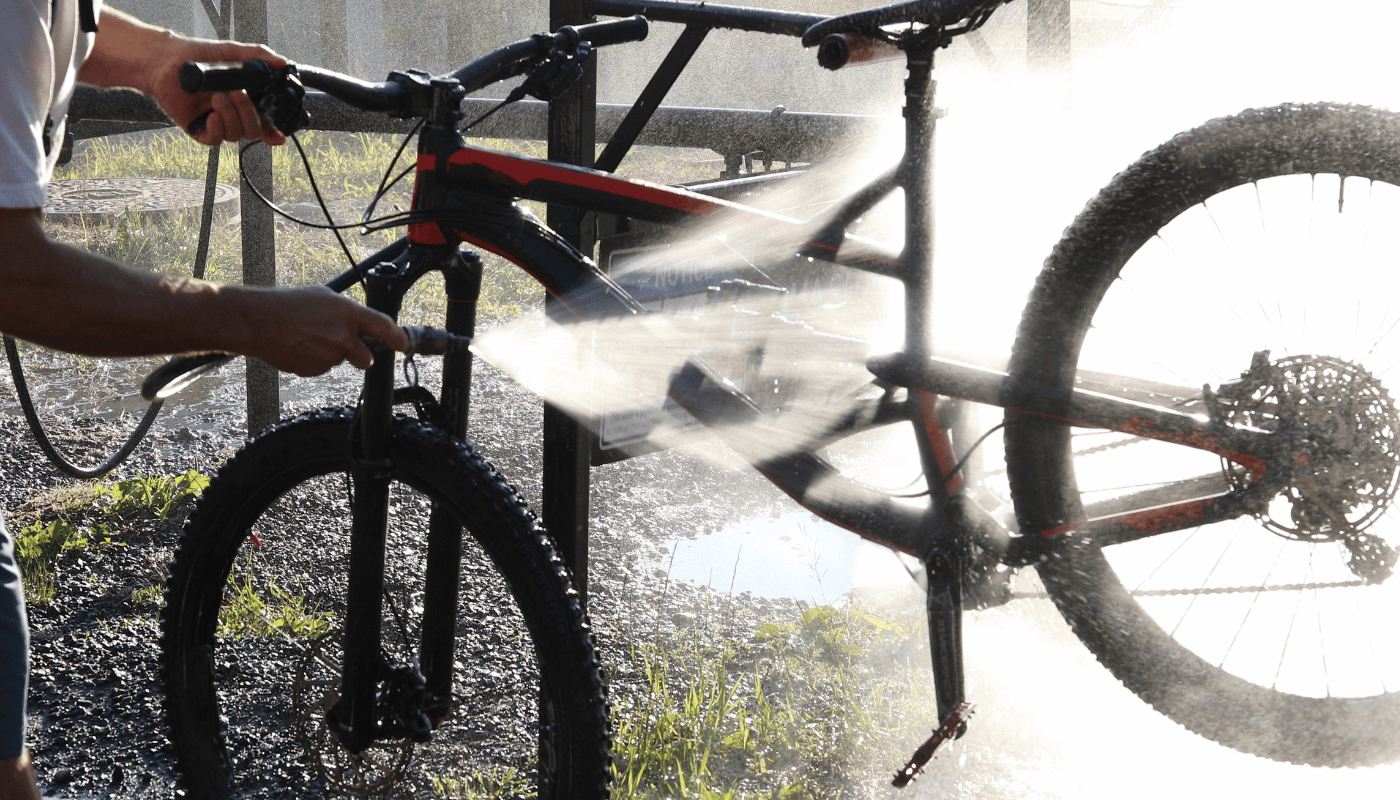Whether you’re a seasoned cyclist or a weekend warrior, maintaining your bicycle’s cleanliness is crucial for its performance and longevity. But where do you start, and what are the best practices for ensuring a thorough clean without damaging your beloved ride? In this guide, we’ll navigate through the essentials of bicycle maintenance, offering tips and tricks that will keep your two-wheeled companion in tip-top condition. Prepare to roll up your sleeves and give your bike the TLC it deserves.
Preparing Your Bicycle for Cleaning
Before you dive into the task of cleaning your bicycle, it’s essential to properly prepare it to ensure an efficient and effective cleaning process. Start by positioning your bicycle in a stable stand or upside down, ensuring it won’t move during the cleaning. Remove any accessories or detachable parts, such as lights, bags, or water bottles, to prevent water damage and to reach every nook and cranny easily.
Next, gather all the necessary cleaning supplies. You’ll need a bucket of soapy water, a soft brush or sponge for the frame, a smaller brush for the drivetrain components, degreaser for the chain and gears, and a hose or a bucket of clean water for rinsing. Having everything at arm’s reach will streamline the cleaning process, making it more efficient. It’s also advisable to check your bicycle for any needed repairs or adjustments. Identifying issues like a loose chain or misaligned brakes before cleaning can save time and prevent accidents.
Essential Cleaning Supplies Checklist
| Item | Use | Notes |
|---|---|---|
| Bucket of soapy water | General cleaning | Mild detergent recommended |
| Soft brush or sponge | Frame and wheels | Prevents scratching |
| Small brush | Drivetrain components | Gets into hard-to-reach areas |
| Degreaser | Chain and gears | Use in a well-ventilated area |
| Hose or clean water | Rinsing | Low pressure is sufficient |
Properly preparing your bicycle for cleaning not only facilitates a smoother cleaning process but also ensures that your bike remains in optimal condition. Paying attention to the details during preparation can significantly enhance the effectiveness of your cleaning routine, contributing to the longevity and performance of your bicycle. Remember, a well-maintained bike offers a safer and more enjoyable riding experience.
Understanding the Importance of a Thorough Preparation
Delving deeper into the preparation phase, it’s clear that this step is not merely about getting ready to clean; it’s about adopting a holistic approach to bicycle maintenance. By thoroughly inspecting your bike and addressing minor issues before they escalate, you’re not just cleaning — you’re caring for your investment. This proactive stance on maintenance can lead to fewer repairs, better performance, and ultimately, a deeper connection with your cycling experience.
Cleaning the Bicycle Frame
Cleaning your bicycle frame is not only crucial for maintaining its aesthetic appeal but also for ensuring its longevity and optimal performance. The process involves removing dirt, grime, and potentially corrosive substances that can accumulate during rides. Start by preparing a bucket of soapy water using a mild, bike-friendly detergent. It’s important to avoid harsh chemicals that can damage the frame’s finish. Using a soft sponge or cloth, gently wipe down the entire frame, paying special attention to areas where dirt tends to accumulate.
Rinse the frame thoroughly with a low-pressure hose or a clean, damp cloth to remove any soap residue. High-pressure hoses should be avoided as they can force water into sensitive components, leading to potential damage. After rinsing, dry the frame with a soft, lint-free cloth to prevent rusting on metal parts and to avoid water spots on the finish. For best results, consider applying a bike-specific protective spray to the frame once it’s dry. This can help repel water and dirt, making your next cleaning session easier.
Choosing the Right Cleaning Products
When cleaning your bicycle frame, the selection of cleaning products is paramount to avoid damage and ensure the longevity of the bike’s surfaces. Opt for cleaners specifically designed for bicycles as they are formulated to be gentle on the paint and coatings while being effective against road grime and dirt. Avoid using household cleaners that can be too harsh and strip away protective finishes.
- Mild, biodegradable bike wash
- Soft sponges or microfiber cloths
- Low-pressure water source for rinsing
- Soft, lint-free cloths for drying
- Bike-specific protective spray
Degreasing the Chain and Gears
Maintaining a clean and well-lubricated bicycle chain and gears is crucial for ensuring the longevity and smooth operation of your bike. Over time, the chain and gears can accumulate a build-up of grease, dirt, and debris, which can impair their functionality and cause wear and tear. Degreasing the chain and gears is a straightforward process that can significantly enhance your bicycle’s performance.
The first step in degreasing the chain and gears is to select a high-quality degreaser specifically designed for bicycle components. It’s important to avoid using harsh chemicals that can damage the metal and rubber parts of your bike. Apply the degreaser liberally to the chain, gears, and derailleurs, making sure to cover all the components thoroughly. Allow the degreaser to soak in for a few minutes to break down the grease and grime.
After allowing the degreaser to penetrate, use a stiff-bristled brush or a specialized chain cleaning tool to scrub the components. Pay particular attention to the crevices and hard-to-reach areas where dirt tends to accumulate. Once you’ve scrubbed the chain and gears thoroughly, rinse them off with clean water. It’s important to remove all traces of the degreaser to prevent it from attracting more dirt and debris. Finally, dry the components with a clean cloth and apply a suitable lubricant to the chain and gears. This will not only protect them from corrosion but also ensure they operate smoothly.
Regularly degreasing and lubricating your bicycle’s chain and gears can make a significant difference in its performance and longevity. It prevents the build-up of harmful substances that can degrade the components over time. Moreover, a clean and well-maintained drivetrain can improve your cycling experience, making each ride smoother and more enjoyable.
- Choose a bicycle-specific degreaser to avoid damaging your bike.
- Apply the degreaser thoroughly to the chain, gears, and derailleurs.
- Allow the degreaser to soak in for a few minutes to break down grease and grime.
- Use a stiff-bristled brush or chain cleaning tool to scrub the components.
- Rinse off the degreaser with clean water and dry the components before re-lubricating.
Implementing these steps as part of your regular bicycle maintenance routine can greatly extend the life of your bike and enhance your riding experience. Remember, a clean bike is a happy bike!
Cleaning Wheels and Brake Pads
Cleaning your bicycle’s wheels and brake pads is essential for maintaining optimal performance and safety. Over time, wheels accumulate grime and debris from the road, while brake pads gather dust and particles that can impair braking efficiency. Begin by removing the wheels from your bike. This will allow you easier access to both the wheels and the brake pads, ensuring a thorough clean. Use a soft brush or cloth to gently remove loose dirt from the wheel’s surface and spokes.
When cleaning the brake pads, pay special attention to removing any debris embedded in them. A dedicated brake cleaner or isopropyl alcohol applied with a clean cloth can be effective for this task. However, be cautious not to get lubricants or cleaners on the brake pads, as this can reduce their effectiveness. After cleaning, spin the wheel to ensure it moves freely and inspect the brake pads for wear. If they are significantly worn down, consider replacing them to maintain your bike’s safety.
For deep cleaning the wheels, use a solution of mild soap and water. Apply it with a sponge or soft cloth, taking care to clean between the spokes and around the hub. Rinse thoroughly with clean water and dry with a soft, lint-free cloth. Regular cleaning of your wheels and brake pads not only extends their life but also improves your biking experience by ensuring smooth operation and reliable braking.
Advanced Tips for Maintaining Wheels and Brake Pads
For those looking to elevate their bike maintenance routine, consider checking the alignment of your brake pads in addition to regular cleaning. Proper alignment ensures even wear and optimal performance, enhancing your cycling experience.
Exploring Deep Cleaning Techniques
Deep cleaning your bike’s wheels and brake pads periodically can significantly impact performance. This involves disassembling the wheel to clean the hub and inspecting the brake pads for any signs of uneven wear or damage. Such meticulous attention to detail can prolong the lifespan of these critical components.
| Cleaning Task | Tools Needed | Frequency |
|---|---|---|
| Wipe Down Wheels | Soft Cloth or Sponge | After Every Ride |
| Clean Brake Pads | Isopropyl Alcohol, Clean Cloth | Bi-Weekly |
| Deep Clean Wheels | Mild Soap, Water, Soft Brush | Monthly |
| Check Brake Pad Wear | None | Monthly |
| Inspect Wheel Alignment | None | Every 6 Months |
Drying and Lubricating Your Bicycle
After thoroughly cleaning your bicycle, the next crucial steps are drying and lubricating. These processes ensure that your bike remains in optimal condition, preventing rust and ensuring that all moving parts operate smoothly. Start by drying your bicycle immediately after washing. Use a clean, absorbent towel to gently pat dry the entire bike. Pay special attention to areas prone to water accumulation, such as under the saddle, around the brakes, and in the drivetrain. A quick blast of compressed air can help remove water from hard-to-reach places. However, avoid using high heat sources like hair dryers, as they can damage the bike’s components.
Once your bicycle is dry, it’s time to lubricate. Lubrication is vital for the longevity and efficiency of your bike. Apply a high-quality bicycle lubricant sparingly to the chain, derailleurs, and any other moving parts. Be careful not to over-lubricate, as excess oil can attract dirt and grime, leading to a buildup that can impair performance. Wipe away any excess lubricant with a clean cloth. Remember, a well-lubricated bike is not only easier to pedal but also quieter and more enjoyable to ride.
Here are a few key points to remember when drying and lubricating your bicycle:
- Use a clean, soft towel for drying to avoid scratching the bike’s surface.
- Concentrate on areas that are difficult to reach and are prone to rust.
- Choose a lubricant specifically designed for bicycles.
- Apply lubricant to the chain and moving parts sparingly.
- Wipe away any excess lubricant to prevent dirt accumulation.
Drying and lubricating your bicycle are essential steps in maintaining its performance and prolonging its lifespan. By following these simple tips, you can ensure that your bike is always ready for your next adventure. Regular maintenance not only keeps your bicycle in top condition but also enhances your riding experience.
In conclusion, taking the time to properly dry and lubricate your bicycle after cleaning it is crucial for its maintenance and performance. These steps prevent rust, ensure smooth operation of all components, and ultimately extend the life of your bike. By incorporating these practices into your regular bike care routine, you can enjoy a smoother, more efficient ride every time.





